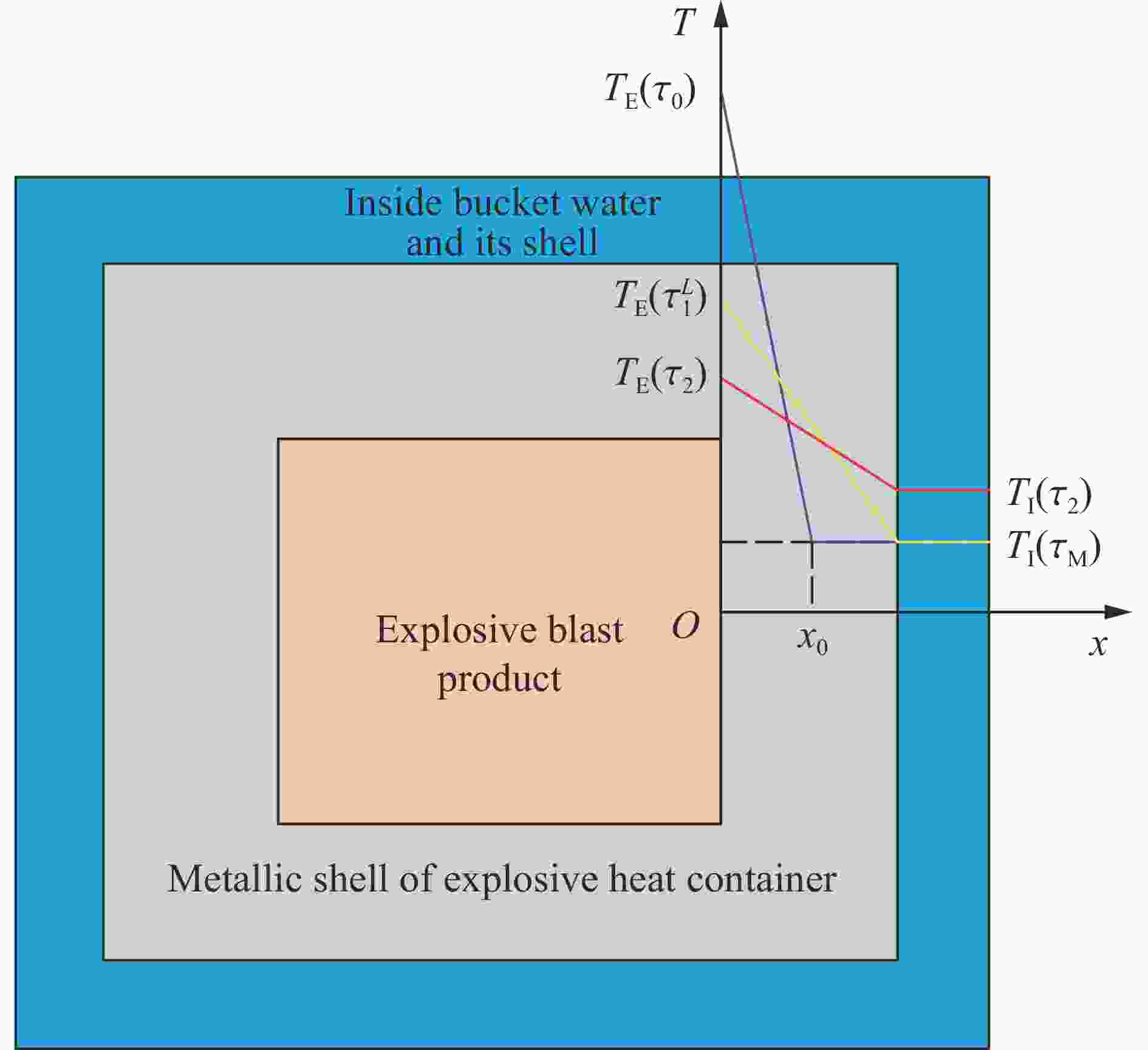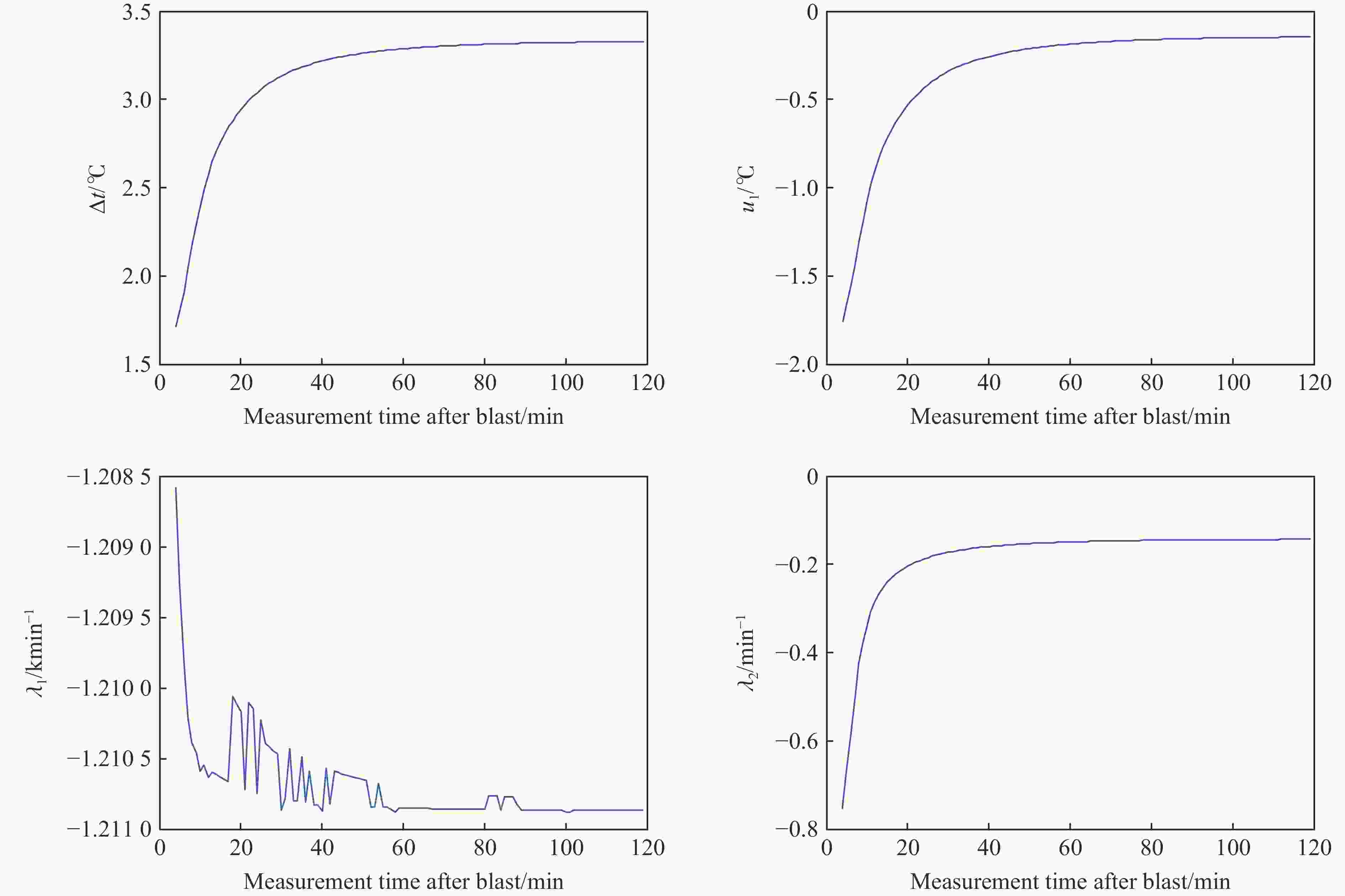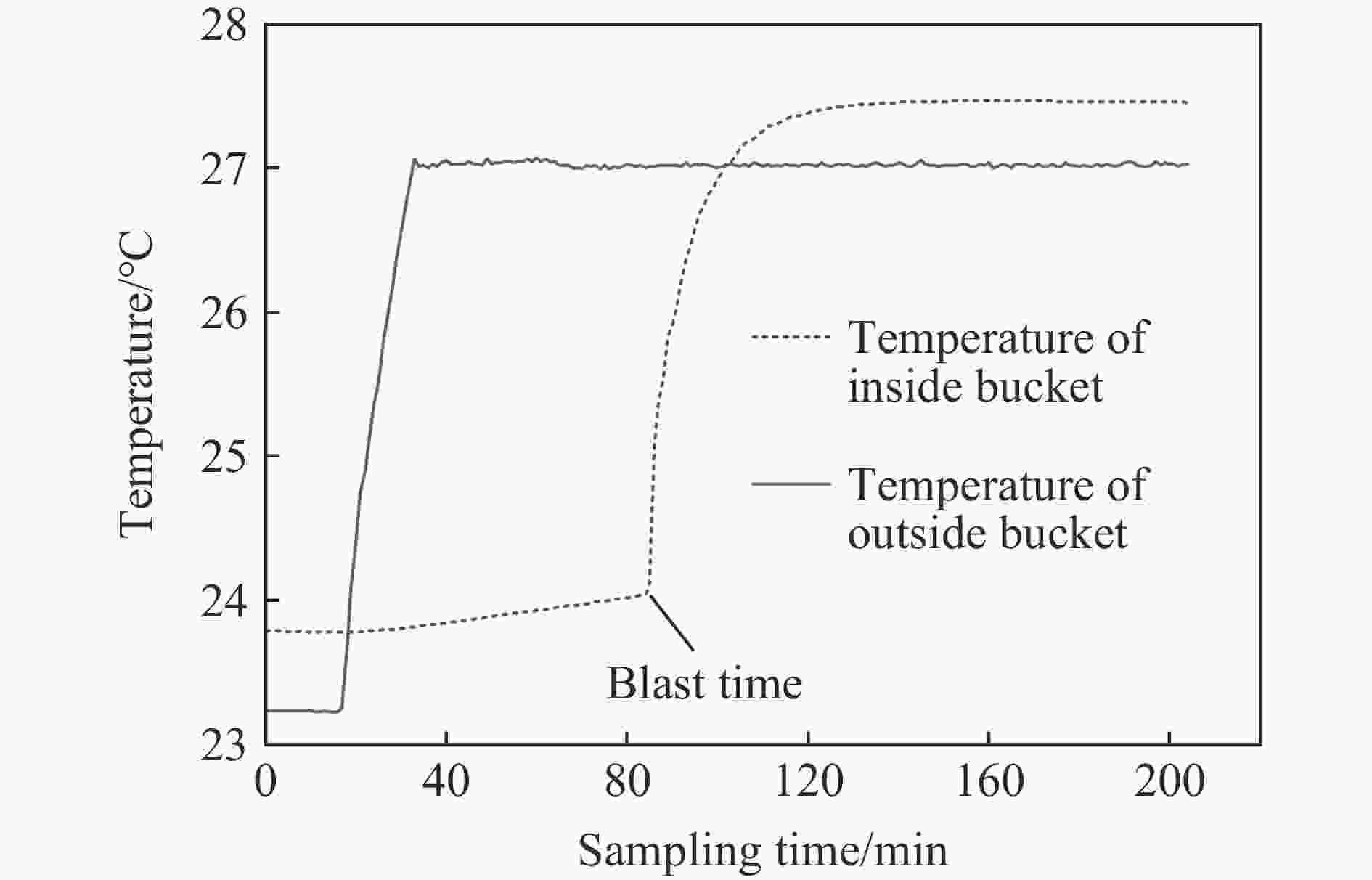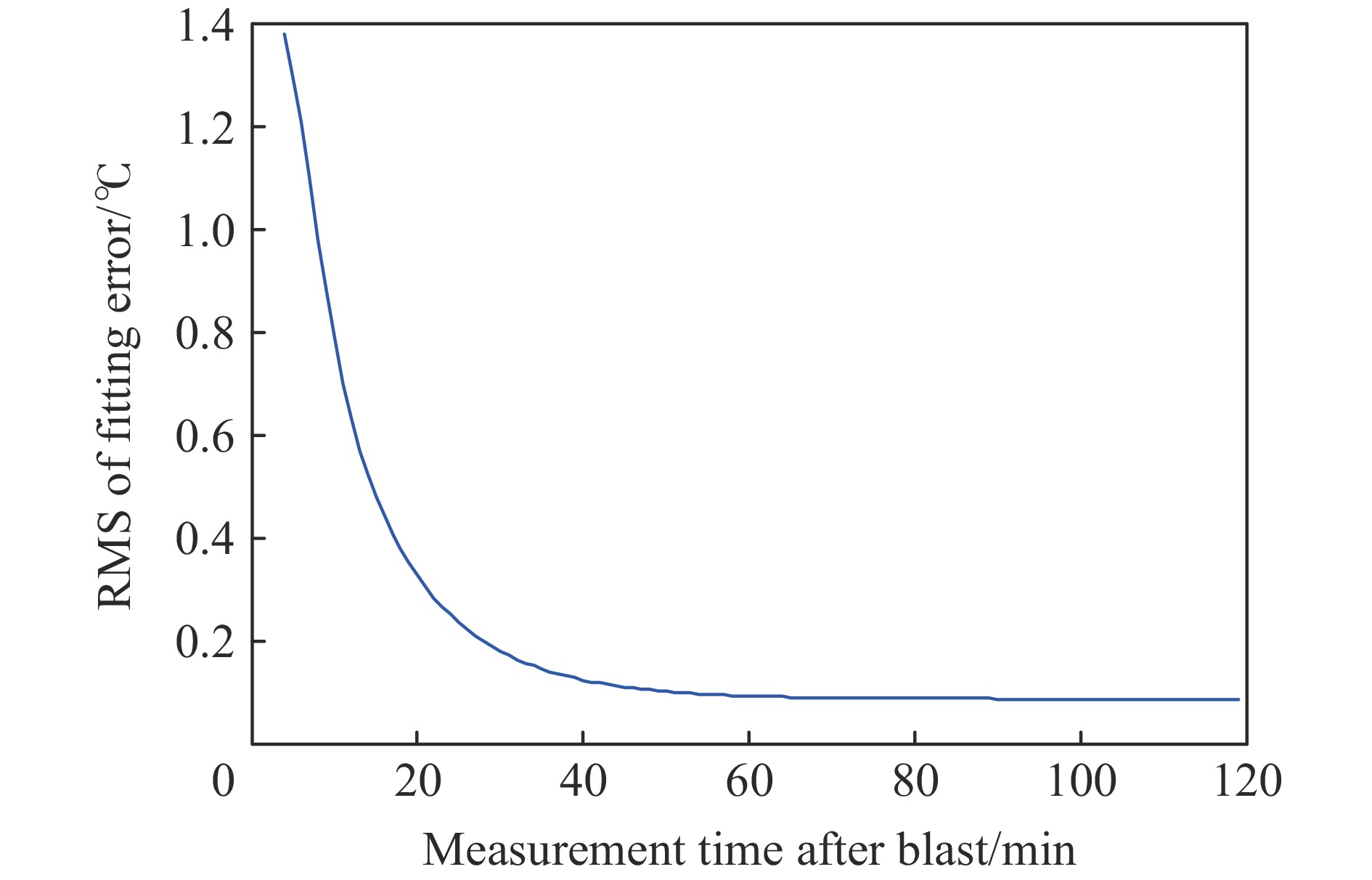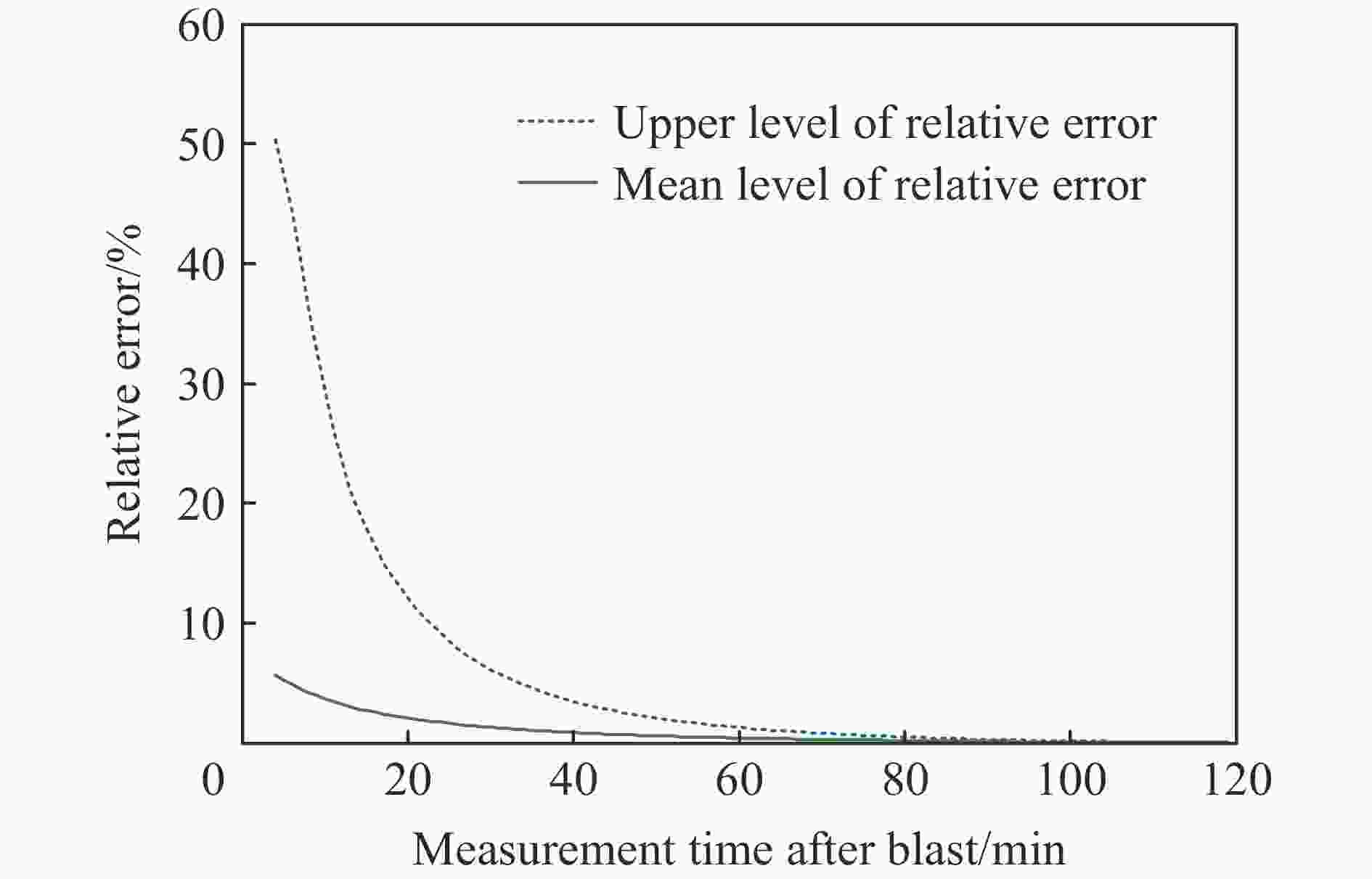A rapid system identification method for measuring explosion heat by the constant temperature method
-
摘要: 为了降低经典恒温法爆热测量中出现系统故障而导致测量失败的风险,提出了基于故障前内桶水温升曲线辨识爆热值的测量方法。首先,分析了测量过程的传热机制,建立了量热计的传热模型,解算得到了各测量阶段的内桶水温升曲线;然后,基于系统辨识理论,提出了中间参数的辨识算法,并基于隔离易振荡参数的思路,给出了修正温升与爆热的快速系统辨识算法,通过误差分析证明了爆热辨识值近似收敛于经典值;最后,应用爆热值分布在4~9 kJ/g的8个炸药样品的实验数据对算法进行了检验,并提出了判断收敛时刻的实验判据。结果表明,辨识算法有效隔离了振荡参数的影响,对内桶水温度变化有较强的预测能力,爆热辨识值能在40 min(主末期1/3)内快速稳定地收敛到3.5%的相对误差上限水平内,实验判据能较准确地判断爆热辨识值收敛时刻。本方法理论上还可拓展至绝热法爆热值计算。Abstract: In order to reduce the risk of measurement failure caused by system failure in the classical constant temperature method for measuring explosion heat, a measurement method was developed for identifying the explosion heat value based on the water temperature rise curve of an inner barrel before failure. Firstly, the heat transfer mechanism of the measurement process was analyzed, and the heat transfer model of the calorimeter was established, and the water temperature rise curve of the inner barrel in each measurement stage was obtained. Then, based on the system identification theory, the identification algorithm of intermediate parameters was proposed, and based on the idea of isolating easily oscillating parameters, a fast system identification algorithm was given to correct the temperature rise and explosion heat. And it is proved that the identification value of explosion heat approximately converges to the classical value. Finally, the test data of 8 explosive samples with explosion heat values ranging from 4 to 9 kJ/g were used to test the algorithm, and the test criterion for judging the convergence time was put forward. The simulation results show that the identification algorithm can effectively isolate the influence of the oscillation parameters and has a strong prediction ability on the temperature change of the water in the inner barrel, and that the identification value of explosion heat can quickly and stably converge to the upper limit of relative error of 3.5% within 40 min (1/3 of the main end stage), and that the test criterion can accurately judge the convergence time of the identified value of explosion heat. This method can also be extended to the adiabatic method for calculating explosion heat.
-
表 1 爆热辨识值的收敛情况
Table 1. Convergent status of system identify value of explosion heat
样本 经典法爆热值/
(kJ·g−1)相对误差上限水平为3.5%时
对应最小辨识时间/min极限收敛水平/
%1 7.765 40 0.024 5 2 7.710 15 1.190 8 3 7.935 25 0.667 8 4 8.112 35 0.885 7 5 4.875 25 3.221 6 6 5.763 33 1.880 1 7 6.511 40 1.826 4 8 6.540 14 1.987 1 -
[1] 王晓峰, 冯晓军, 肖奇. 温压炸药爆炸能量的测量方法 [J]. 火炸药学报, 2013, 36(2): 9–12. DOI: 10.3969/j.issn.1007-7812.2013.02.002.WANG X F, FENG X J, XIAO Q. Method for measuring energy of explosion of thermobaric explosives [J]. Chinese Journal of Explosives and Propellants, 2013, 36(2): 9–12. DOI: 10.3969/j.issn.1007-7812.2013.02.002. [2] 金朋刚, 郭炜, 任松涛, 等. TNT密闭环境中能量释放特性研究 [J]. 爆破器材, 2014, 43(2): 10–14. DOI: 10.3969/j.issn.1001-8352.2014.02.003.JIN P G, GUO W, REN S T, et al. Research on TNT energy release characteristics in enclosed condition [J]. Explosive Materials, 2014, 43(2): 10–14. DOI: 10.3969/j.issn.1001-8352.2014.02.003. [3] 曹威, 何中其, 陈网桦, 等. 水下爆炸法测量含铝炸药后燃效应 [J]. 含能材料, 2012, 20(2): 229–233. DOI: 10.3969/j.issn.1006-9941.2012.02.020.CAO W, HE Z Q, CHEN W H, et al. Measurement of afterburning effect of aluminized explosives by underwater explosion method [J]. Chinese Journal of Energetic Materials, 2012, 20(2): 229–233. DOI: 10.3969/j.issn.1006-9941.2012.02.020. [4] 范荣桂, 王建灵. 炸药爆热的恒温法测试研究 [J]. 煤矿爆破, 2001(4): 9–11. [5] 周霖, 谢中元, 陈勇. 炸药水下爆炸气泡脉动周期工程计算方法 [J]. 兵工学报, 2009, 30(9): 1202–1205. DOI: 10.3321/j.issn:1000-1093.2009.09.010.ZHOU L, XIE Z Y, CHEN Y. An engineering calculation method on the bubble pulse period of underwater explosion [J]. Acta Armamentarii, 2009, 30(9): 1202–1205. DOI: 10.3321/j.issn:1000-1093.2009.09.010. [6] 俞统昌, 尹孟超. 混合炸药爆热的经验估算 [J]. 火炸药, 1984(2): 50–55. [7] 韩早. 温压炸药能量参数计算与释能规律研究[D]. 南京: 南京理工大学, 2015. [8] HERNÁNDEZ-RIVERA S P, INFANTE-CASTILLO R. Predicting heats of explosion of nitrate esters through their NBO charges and 15N NMR chemical shifts on the nitro groups [J]. Computational and Theoretical Chemistry, 2011, 963(2−3): 279–283. DOI: 10.1016/j.comptc.2010.10.038. [9] KESHAVARZ M H. Quick estimation of heats of detonation of aromatic energetic compounds from structural parameters [J]. Journal of Hazardous Materials, 2007, 143(1−2): 549–554. DOI: 10.1016/j.jhazmat.2006.09.078. [10] 蔡星会, 白少峰, 孙新利, 等. 基于人工神经网络的炸药爆炸参数预测 [J]. 四川兵工学报, 2010, 31(1): 1–3. DOI: 10.3969/j.issn.1006-0707.2010.01.001. [11] 杨世铭, 陶文铨. 传热学[M]. 4版. 北京: 高等教育出版社, 2006. [12] 宋浦, 杨卓, 赵向军, 等. 含铝炸药爆炸光辐射能量输出特性研究 [J]. 火炸药学报, 2020, 43(3): 271–275. DOI: 10.14077/j.issn.1007-7812.202003013.SONG P, YANG Z, ZHAO X J, et al. Study on the energy output characteristics of light radiation from aluminized explosive explosion [J]. Chinese Journal of Explosives and Propellants, 2020, 43(3): 271–275. DOI: 10.14077/j.issn.1007-7812.202003013. [13] 张玉磊, 翟红波, 李芝绒, 等. TNT和温压炸药的爆炸火球表面温度对比试验研究 [J]. 爆破器材, 2015, 44(5): 23–26. DOI: 10.3969/j.issn.1001-8352.2015.05.006.ZHANG Y L, ZHAI H B, LI Z R, et al. Experimental research on the contrast of the fireball’s surface temperature of TNT and thermobaric explosive [J]. Explosive Materials, 2015, 44(5): 23–26. DOI: 10.3969/j.issn.1001-8352.2015.05.006. -






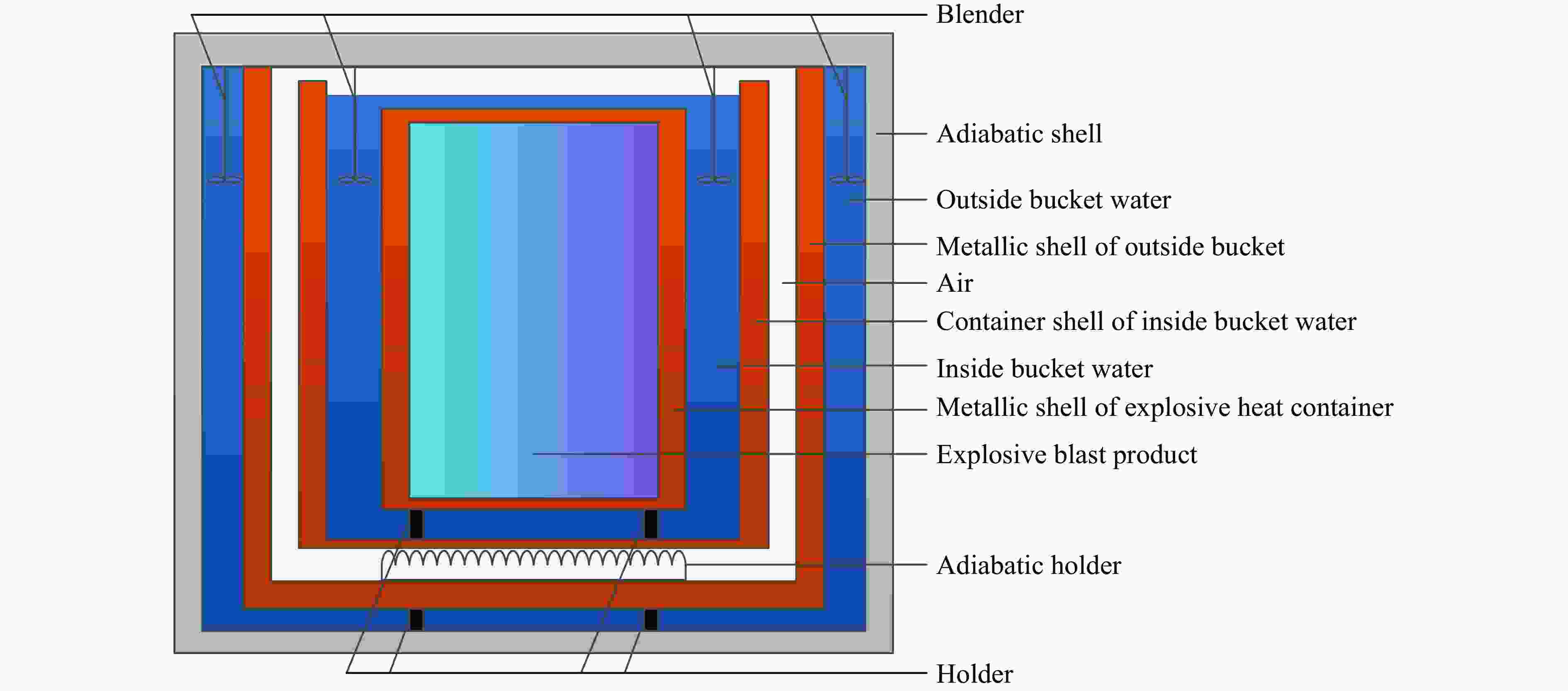
 下载:
下载:
